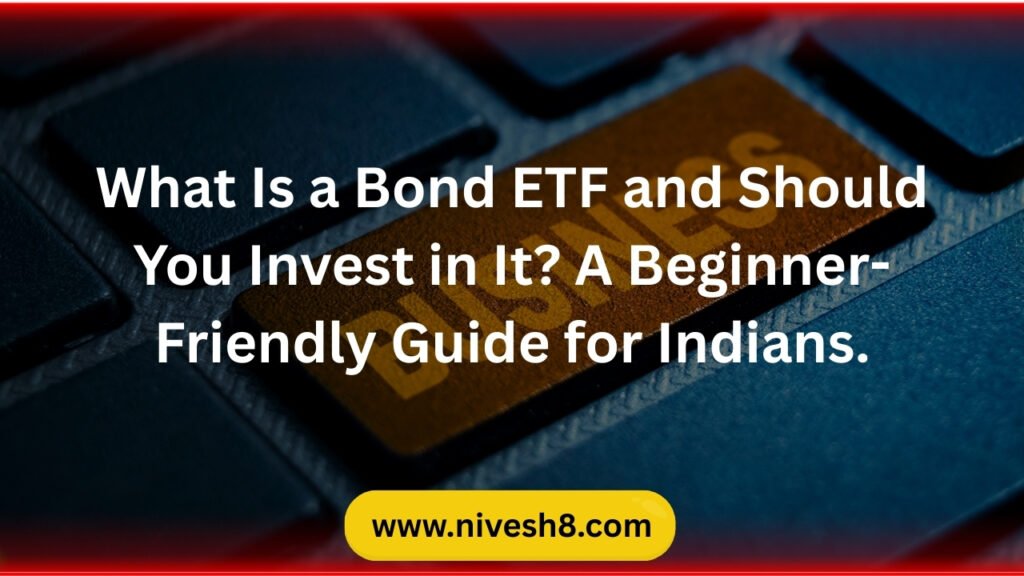Fixed deposits and mutual funds are familiar subjects for most Indians. However, many people are unaware of another basic and secure investing choice: a bond ETF. A bond ETF might be a wise decision if you’re looking for low-risk investments that yield higher returns than a savings account.
In this article, we’ll go over what a bond ETF is, how it operates, and whether it would be appropriate for you.
What is a Bond ETF?
An Exchange Traded Fund, or bond ETF, is a type of investment comprising a set of bonds. These could be PSU bonds, corporate bonds, or government bonds. Investing in a portfolio of bonds via the stock market replaces buying a single bond.
Like shares, a bond ETF is traded on the stock market and can be bought or sold at any time during market hours.
Why Might One Want a Bond ETF?
Many Indians are choosing to invest in bond ETFs for the following reasons:
- Low risk: Most bond ETFs fund government or AAA-rated bonds.
- Higher yields than those of savings accounts or temporary FDs.
- High liquidity: You can sell it on the exchange at any time.
- Low cost: Bond ETFs have lower expense ratios compared to mutual funds.
- Diversification: One investment can expose you to several bonds.
Forms of Bond ETFs Found in India
Your risk and time constraints will determine which type of bond ETF is right for you. The following are available in India:
- Government Bond ETFs: These solely invest in government assets, which are secure but yield lower returns.
- Corporate Bond ETFs: These invest in bonds issued by corporations and offer more returns, but with somewhat more risk.
- PSU Bond ETFs: These are investments in public sector company bonds.
- Target Maturity Bond ETFs: These pay principal and interest from a predetermined maturity date, just like FDs.
Popular Bond ETFs Available in India
Some well-known bond ETF choices for Indian investors include:
- Bharat Bond ETF: Supported by the government, this fund invests in top-rated PSU bonds.
- SBI ETF Nifty SDL: Focuses on state development loans (SDLs).
- ICICI Prudential Gilt ETF: Focuses on government securities.
- Edelweiss Bharat Bond ETF: Good for those looking for consistent returns.
Platforms like Zerodha, Groww, and Paytm Money allow you to access these ETFs.
Who Should Invest in a Bond ETF?
A bond ETF could be ideal for the following:
- Retired individuals looking for consistent returns.
- Conservative investors who aim for low risk.
- First-time investors seeking alternatives to FDs.
- Individuals aiming to build a well-balanced financial portfolio.
Reminders
- Though bond ETFs are often steady, returns are not fixed like FDs.
- Bond ETF market values are subject to minor fluctuations.
- Choose the right type depending on your time horizon and risk tolerance.
- Look for a bond ETF with decent past performance and a reasonable expense ratio.
Last Words
A bond ETF is a modern, low-cost, and flexible way to invest in bonds. It offers greater returns than savings accounts and more safety than stocks. Bond ETFs could be a smart addition to your investment strategy, whether you’re looking to lower your risk or simply want to start investing.
Make sure your choice aligns with your financial goals, and seek guidance if needed before making an investment.



